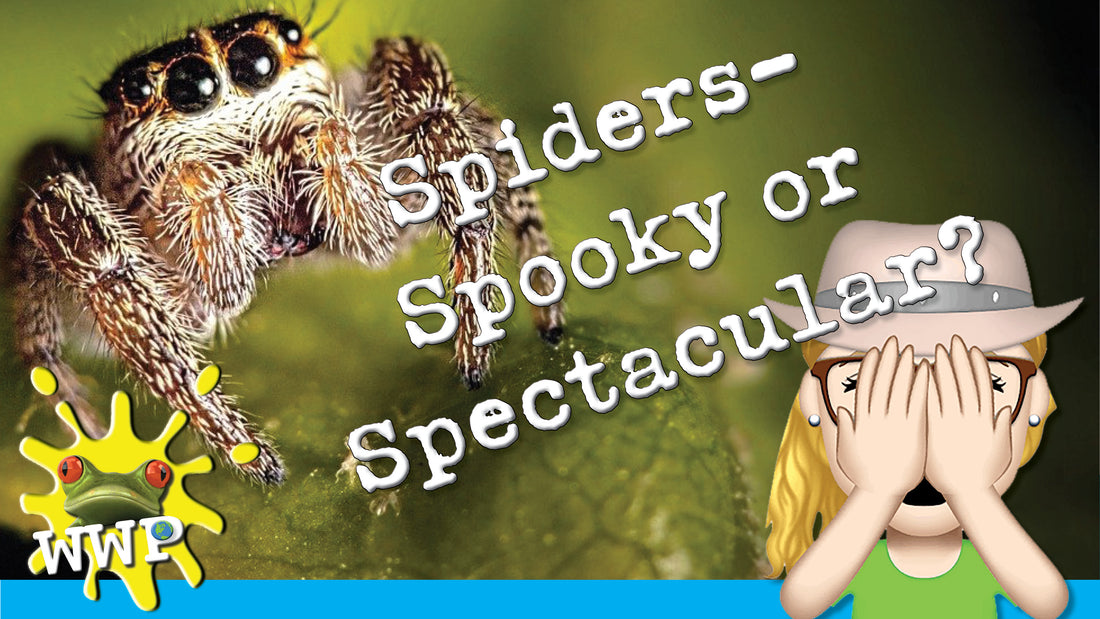Welcome, fellow nature enthusiasts, to another thrilling episode of Nature Just Got Real! In this spider-tastic installment, we embark on an arachnid adventure, delving into the fascinating world of spiders. Are they spooky or spectacular? Let's unravel the web of myths and facts surrounding these eight-legged wonders.
Arachnids, Not Insects:
To kick things off, we must clarify that spiders are not insects; they belong to a unique group of creatures known as arachnids. These exclusive club members share common characteristics: eight legs, two body parts, and no antennae. Think of it as an "Arachnid Dance Party Club," and you're invited!
Daddy longlegs, scorpions, mites, and ticks are also arachnids, but they're not spiders. The revelation that daddy longlegs are not spiders is a shocker!
The Spider Life Cycle:
Now, let's explore the spider life cycle. It all begins with tiny spider eggs, carefully housed in silk sacs by mama spider. Amazingly, she can lay hundreds of eggs, creating a large arachnid family. These eggs hatch into adorable baby spiders, known as spiderlings. They molt multiple times, shedding their skin to accommodate their growing bodies. It's like they're wearing spider onesies that they outgrow! Once they reach adulthood, they're ready to weave their webs and catch delectable meals.
Spider Superpowers:
Spiders have a slew of remarkable abilities. They're silk-spinning pros, and while not all of them spin webs, they use silk for various purposes, from wrapping prey to creating safety lines for parachuting. Some spiders are ambush predators, like the ninja-like jumping spider.
Fascinating spider facts:
- Different spider species have varying numbers of eyes, from two to eight.
- The Goliath bird-eating spider can indeed eat birds, though your pet parakeet is safe.
- Arachnophobia, the fear of spiders, ranks as the world's most common phobia.
- Most spiders are harmless to humans and serve as natural pest controllers, keeping annoying insects at bay.
Arachnology: The Science of Spiders:
Dr. Chuck Darwin introduces us to the fascinating field of arachnology, the study of spiders and other arachnids. Arachnologists are scientists who specialize in these creatures, while arachnological studies observe their behaviors. It's essential to distinguish between arachnology and entomology, the study of insects, as spiders are not insects.
Myths Debunked:
In this episode, Tito busts some spooky spider myths, separating fact from fiction.
True or False? Here are some of the myths addressed:
- All spiders spin silk.
- All spiders spin webs.
- All spiders are carnivores.
- All spiders vomit on their prey.
- Spiders have oily feet to avoid getting stuck in their webs.
- Some spiders have venom dangerous to humans.
- People swallow an average of four spiders a year in their sleep.
Thankfully, many of these myths are debunked, offering a sigh of relief for spider enthusiasts.
Spider Etiquette: Leave House Spiders Indoors:
Captain Jack advises against catching house spiders and setting them free outside. House spiders are adapted to indoor living, enjoying the cozy and warm environment. Releasing them outdoors might be detrimental, as they are unaccustomed to the cold and unpredictable outdoor conditions. Instead, house spiders act as nature's pest controllers, keeping annoying bugs in check.
Conclusion:
In this spider-tastic episode of Nature Just Got Real, we've explored the intriguing world of arachnids. Spiders are indeed spectacular, and their roles in our ecosystem are invaluable. By understanding them better and debunking myths, we can develop a greater appreciation for these eight-legged wonders. So, the next time you encounter a spider, remember, it's a friend, not a foe. Say hello to your nature-loving, silk-spinning roommate, and let it continue its vital work in maintaining the balance of our environment. Happy spider-watching!
Links for this episode:
There's a project PDF to go along with the episode that involves apps, and you can download the PDF HERE.
If you are an educator and would like the classroom resource packet for this episode, you can get it HERE.
Get the Weird & Wacky Planet series:
https://weirdandwackyplanet.com/pages/books
Get a FREE e-Book:
https://weirdandwackyplanet.com/pages/free-book

